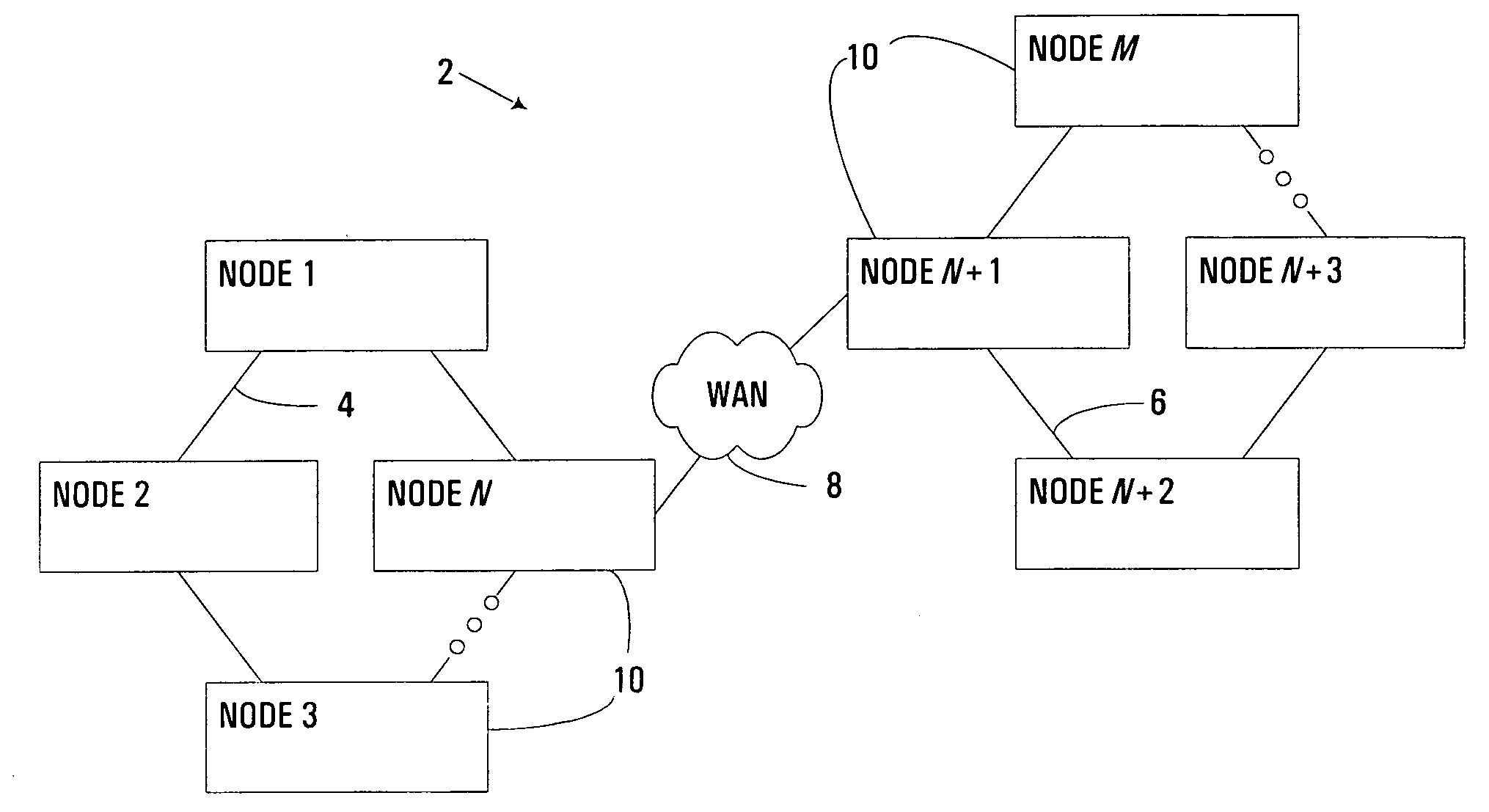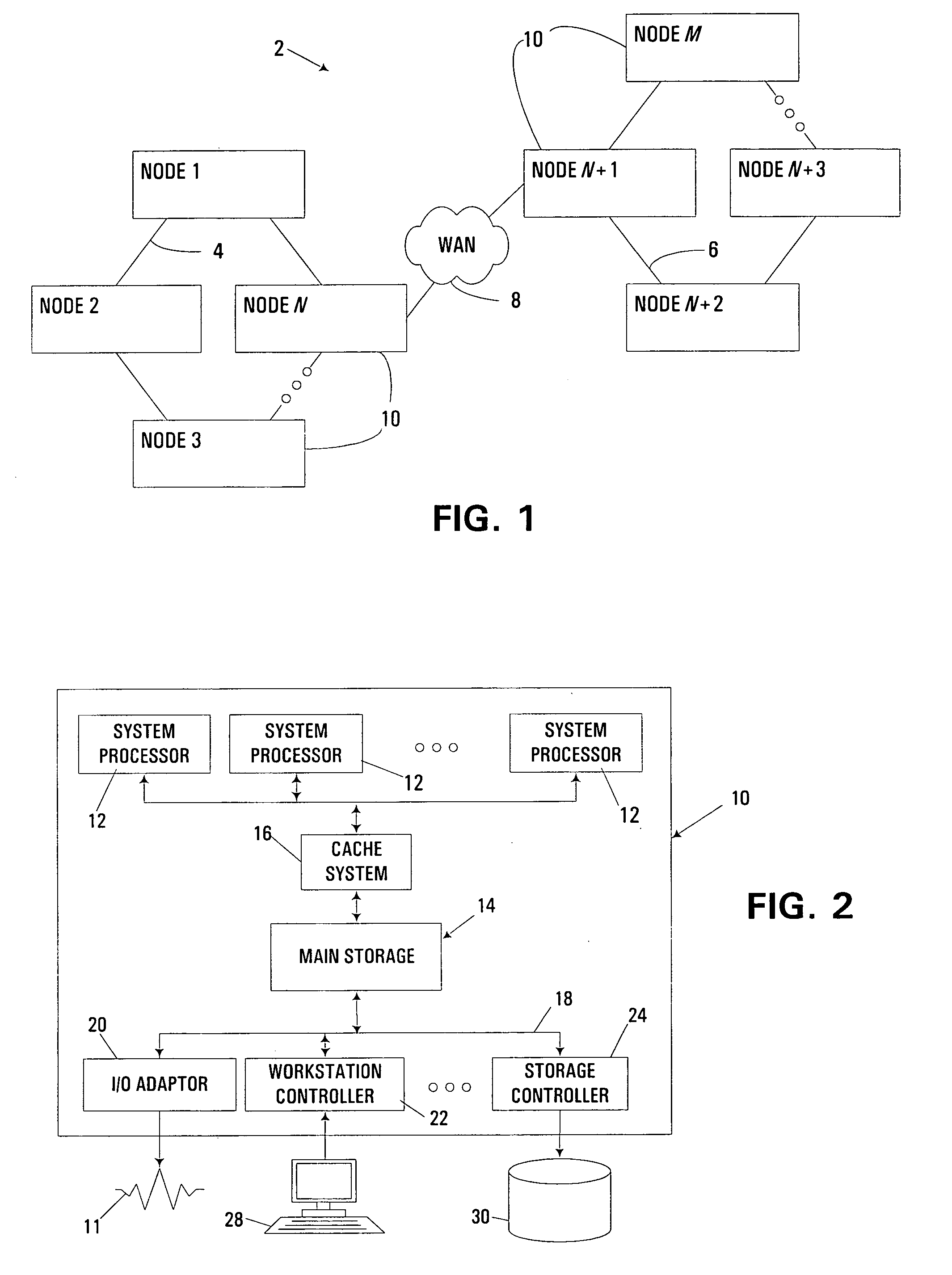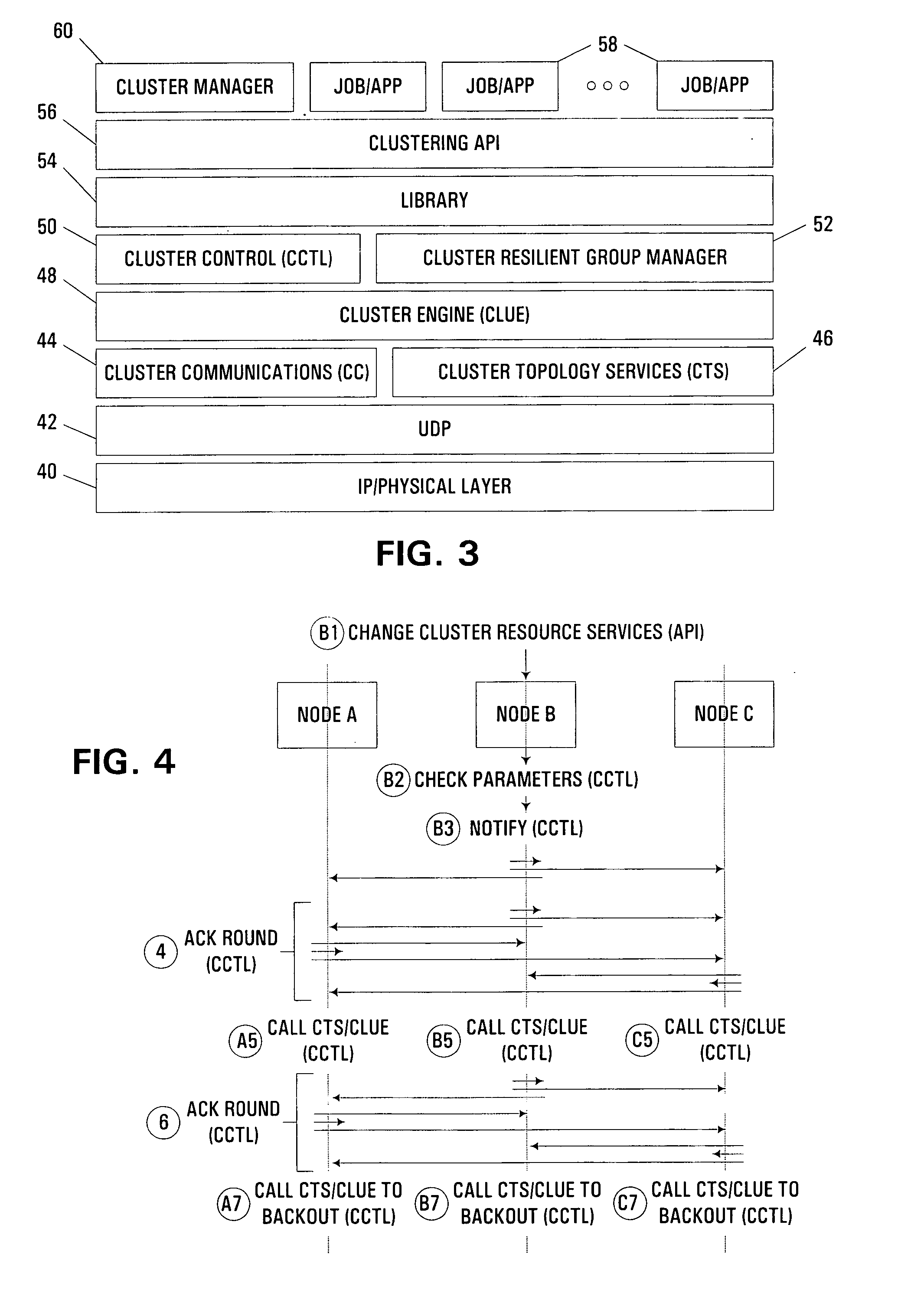Dynamic modification of fragmentation size cluster communication parameter in clustered computer system
a computer system and fragmentation size technology, applied in the field of dynamic modification of fragmentation size cluster communication parameters in clustered computer systems, can solve the problems of not being able to natively support the same degree of reliability, reducing the amount of network traffic, and often not being able to modify parameters, etc., to achieve little or no effect on system availability
- Summary
- Abstract
- Description
- Claims
- Application Information
AI Technical Summary
Benefits of technology
Problems solved by technology
Method used
Image
Examples
Embodiment Construction
[0029]The embodiments described hereinafter utilize a distributed protocol to ensure efficient and reliable modification of cluster communication parameters, in particular of a fragmentation size parameter, with little or no effect on system availability. Turning to the Drawings, wherein like numbers denote like parts throughout the several views, FIG. 1 illustrates an exemplary clustered computer system 2 including a plurality of nodes 10 interconnected with one another in a distributed manner, e.g., via local area networks (LAN's) 4, 6 and a wide area network (WAN) 8. Any number of network topologies commonly utilized in clustered computer systems may be used consistent with the invention. Moreover, individual nodes 10 may be physically located in close proximity with other nodes, or may be geographically separated from other nodes, as is well known in the art. By virtue of the flexible nature of the herein-described dynamic cluster communication parameter control, however, it wil...
PUM
 Login to View More
Login to View More Abstract
Description
Claims
Application Information
 Login to View More
Login to View More - R&D
- Intellectual Property
- Life Sciences
- Materials
- Tech Scout
- Unparalleled Data Quality
- Higher Quality Content
- 60% Fewer Hallucinations
Browse by: Latest US Patents, China's latest patents, Technical Efficacy Thesaurus, Application Domain, Technology Topic, Popular Technical Reports.
© 2025 PatSnap. All rights reserved.Legal|Privacy policy|Modern Slavery Act Transparency Statement|Sitemap|About US| Contact US: help@patsnap.com



